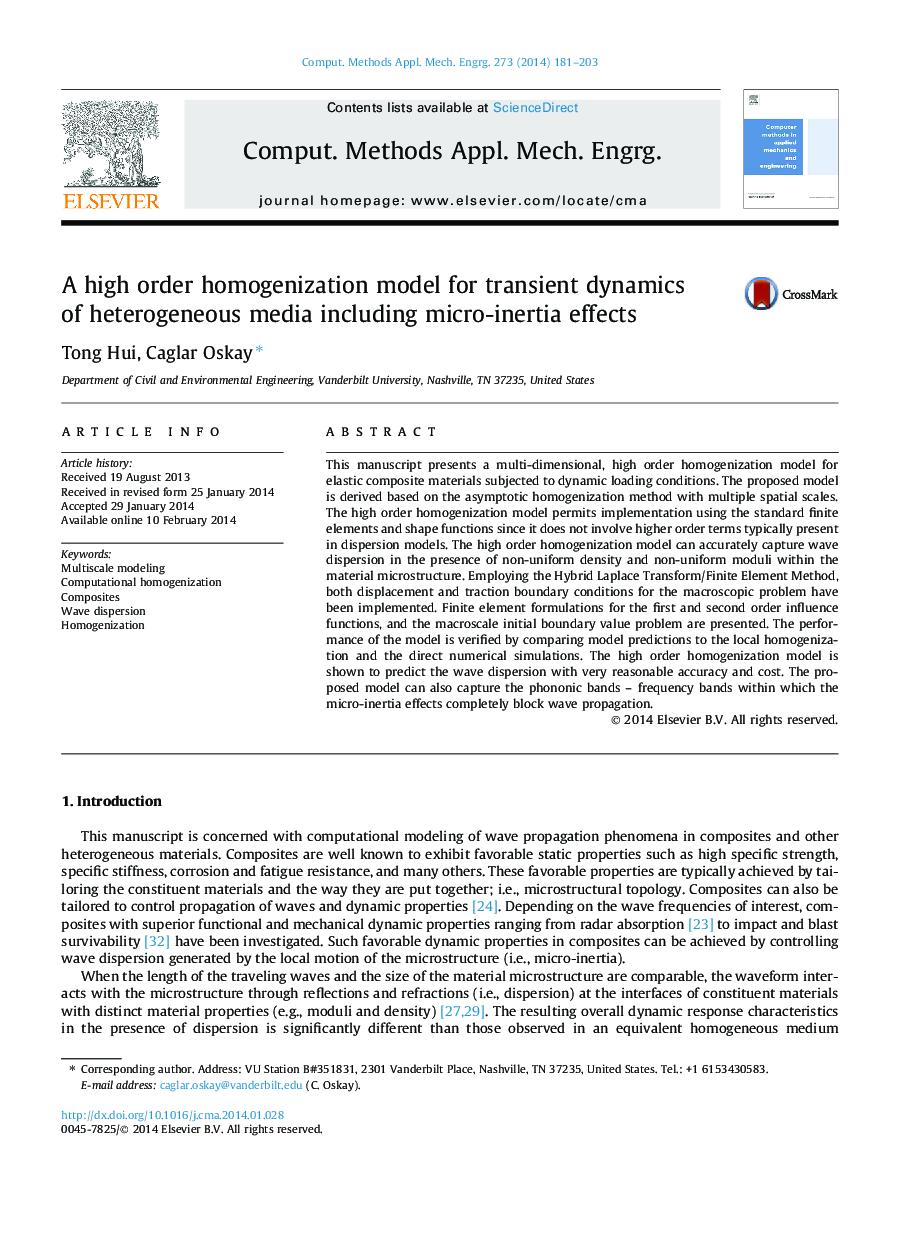| Article ID | Journal | Published Year | Pages | File Type |
|---|---|---|---|---|
| 498003 | Computer Methods in Applied Mechanics and Engineering | 2014 | 23 Pages |
•A new high order homogenization model for modeling dispersion in heterogeneous materials.•The model can interrogate the full range of impedance contrast for microstructure-induced dispersion.•Standard C0 continuity finite elements are used to capture the micro-inertia effects.•Phononic bands – frequency bands within which micro-inertia effects block wave propagation – are predicted.
This manuscript presents a multi-dimensional, high order homogenization model for elastic composite materials subjected to dynamic loading conditions. The proposed model is derived based on the asymptotic homogenization method with multiple spatial scales. The high order homogenization model permits implementation using the standard finite elements and shape functions since it does not involve higher order terms typically present in dispersion models. The high order homogenization model can accurately capture wave dispersion in the presence of non-uniform density and non-uniform moduli within the material microstructure. Employing the Hybrid Laplace Transform/Finite Element Method, both displacement and traction boundary conditions for the macroscopic problem have been implemented. Finite element formulations for the first and second order influence functions, and the macroscale initial boundary value problem are presented. The performance of the model is verified by comparing model predictions to the local homogenization and the direct numerical simulations. The high order homogenization model is shown to predict the wave dispersion with very reasonable accuracy and cost. The proposed model can also capture the phononic bands – frequency bands within which the micro-inertia effects completely block wave propagation.
